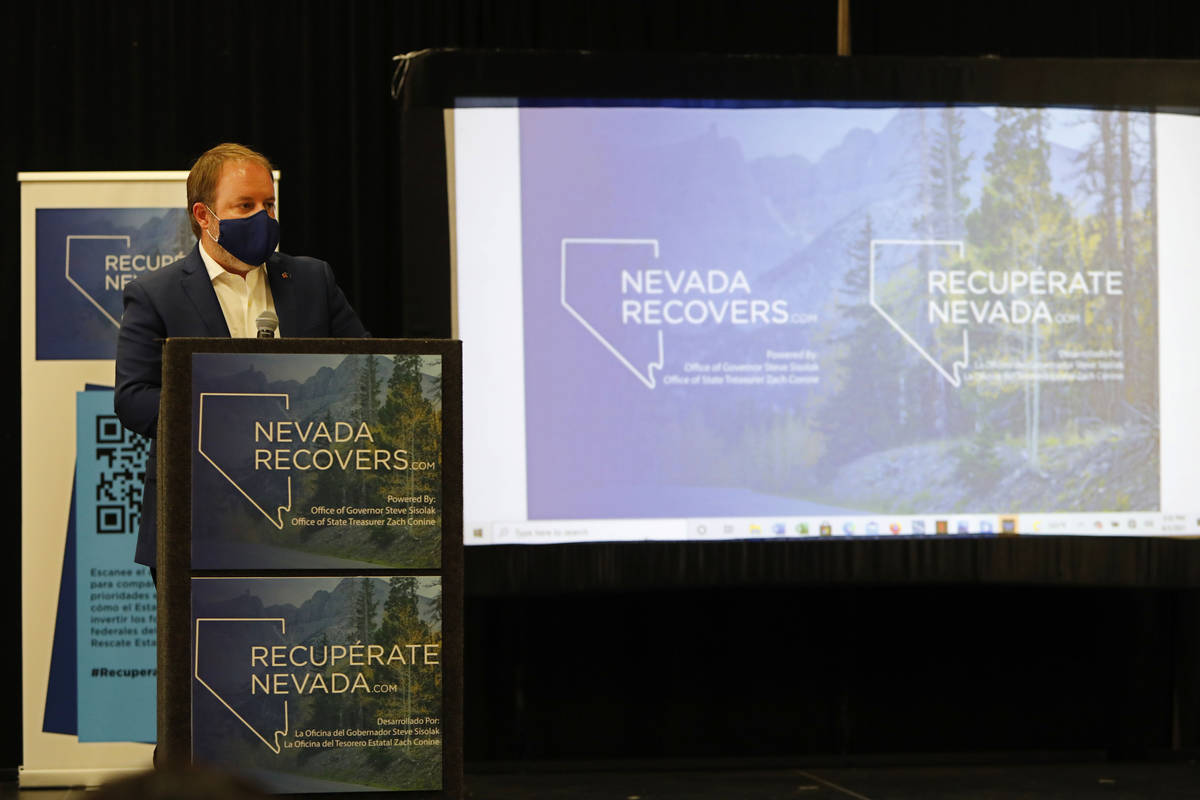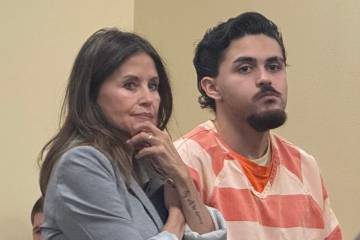Public input sought regarding Nevada ARPA spending
Regardless of where one falls on the spectrum when it comes to their opinions on the COVID-19 pandemic, it is undeniable that the public health situation over the last 18 months has had devastating impacts all across the state of Nevada as well as the entire country.
Businesses, organizations, families, individuals and even government entities have all felt the brunt of the pandemic, with economic instability and uncertainty regarding the future taking an immense toll that has left the whole of the country reeling. Now, with billions of dollars pouring into the state in the form of COVID-19 recovery funds, namely those from the most recent allotment from the federal government via the American Rescue Plan Act, or ARPA, the state is turning its attention to determining precisely how it will put those dollars to work to help the state and its millions of residents bounce back.
During a special meeting of the Nye County Commission on Wednesday, Aug. 4, Nevada Treasurer Zach Conine provided a presentation giving an overview of the ARPA and announced that the state has launched a Nevada Recovers Listening Tour with the specific goal of gathering input from community members throughout the Silver State to help decide what sort of programs and services should be created using the $6.7 billion that the state has received.
“The Nevada governor and I yesterday launched something called the Nevada Recovers Listening Tour, a 75-day tour with 75 events,” Conine told commissioners on Aug. 4. “We believe we’ve got an unprecedented opportunity to create the Nevada we deserve. In the legislative session, toward the end we passed a bill called SB (Senate Bill) 461… which expressed some priorities for how we wanted to think about spending those dollars that have come in through the American Rescue Plan and that includes the Every Nevadan Recovery Framework.”
Conine said one of the primary missions for the state is to collaborate with other entities, such as county governments, to ensure that the ARPA funding goes as far as possible, without any overlap or duplication of programs.
A total of $6.7 billion has come to Nevada, which has been separated into a variety of different “buckets” of funding, each specific to a certain category, such as state general aid, local general aid, education and more. Under the state general aid category, the state has $2.7 billion to spend while a further $1 billion has been allotted for local general aid, of which Nye County is set to receive just over $9 million.
There are three types of aid, non-discretionary, quasi-discretionary and discretionary, which each have their own requirements and restrictions, Conine explained. These rules are currently amalgamated in what is called the “Interim Final Rules” issued by the U.S. Treasury Department, which are still to be adjusted before the actual final rules are issued. Conine noted that it is quite complicated, with the rules constantly seeing amendment.
“In order to try to create something out of all that information, we rolled out the Every Nevadan Recovery Framework,” Conine stated.
That framework details four “bands of prioritization” as well as seven “priorities for strategic enhancement”. The “bands of prioritization” include Nevadans’ basic needs, community, economy and quality of life. The seven “priorities for strategic enhancement”, which Conine said were intentionally broad, included increasing access to health care and community-based services; strengthening public education; supporting disadvantaged communities; strengthening Nevada’s workforce, supporting small businesses and revitalizing the economy; investing in infrastructure; modernizing and enhancing state government services; and addressing budget shortfalls.
“So how do we do this?” Conine said. “In conversations with the treasury and the White House, it is very clear that their purpose here, their intent, is for states and counties to be intentional about this process… Step one is a statewide listening tour, that is what we kicked off yesterday.”
During the listening tour, the Nevada governor’s office and Nevada treasurer’s office will be traveling around the state to collect stakeholder input and feedback from the communities to guide the expenditure of the ARPA funds. No details have been provided on the dates, times and locations that representatives from the two offices will be visiting.
However, in addition to the listening tour, a survey has been set up online to allow residents to voice their thoughts on recovery, with Conine noting, “We’ve gotten submissions from members of the executive branch, from the Legislature, from the cities and counties all over the state, from nonprofit partners, from chambers of commerce, from individual businesses who need help, all sorts of different submissions. We’ve also gotten ideas from a more qualitative basis, what types of things. Do you care more about education, or more about the health response? Do you care more about food insecurity or housing instability? So all that information comes in and goes in to step two.”
Once the Nevada Recovers Listening Tour is complete, step two will see that data summarized into a comprehensive road map, Conine said, which will be followed by action from the state to design and create new programs and services utilizing the ARPA dollars.
Conine stressed that when submitting ideas on how to spend the ARPA funding, respondents should not in any way censor themselves, emphasizing that all ideas are welcome, even those those may not have a direct connection to the COVID-19 pandemic.
“We don’t want anyone wasting time trying to figure out whether or not the things they are suggesting through this process are eligible or not,” Conine said. “We just want the ideas and then we will figure out what ‘bucket’ makes the most sense to pay for them.”
Residents can submit their ideas and fill out the survey at www.NevadaRecovers.com
Contact reporter Robin Hebrock at rhebrock@pvtimes.com

















